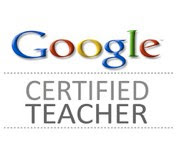I'm referring to the itch I've had to try out Scratch in the lab at school. I have wanted to explore Scratch for a while. Since I was asked to take the 8th graders for two hours this morning and do whatever I wanted with them, I thought I would give it a go.
Scratch is a free download from the Lifelong Kindergarten group at MIT (image below skitched from their website). Ok, just the name "Lifelong Kindergarten" totally appeals to me. It evokes Seymour Papert, father of all that is good with technology in learning and education.

Cool, right?
I started by showing them this video intro.
I got the video from the scratch website support page. The whole website is a treasure trove of info and projects.
As I was showing the video to the 8th graders, I heard murmurs of, "That's cool. Are we going to do this? Etc." I told them that I had not yet taken the time to try out Scratch. Anything they were going to learn, they were going to learn and figure out on their own, teach each other, and then, of course, teach me. It was a lot of fun to watch and listen as they explored and created, helped each other, laughed, questioned, tried different ways to make things happen. I think some of them were a bit surprised when I told them that there was actually a lot of math involved in what they were doing.
Later in the day, I introduced Scratch to the 5th graders. I also showed them the 8th grader's Scratch projects. The 5th graders, interestingly, had a little bit harder time as a group, with the learning by exploring. They had a certain result in mind and some of them wanted me to tell them how to make it happen. I have been working on doing less of this and encouraging, especially with the upper grades, more exploration, problem solving, trial and error. With technology there are usually many ways to solve a problem, and often they find a great solution that works for them.
Miscellaneous Observations:
•Scratch can be a rorschach test of sorts. For one thing, if they start with a blank project and no structured assignment, it is interesting to watch the students project themselves into their project.
•I really got a chance to see which students are independent and comfortable with learning through exploration and which students are dependent on me showing them how to do each thing. There are a few with whom I need to make an effort to cut, or at least redirect, the cord.
It would be really interesting to do this type of learning with the teachers. A lot of them need to be exposed to more playful, trial and error learning to grow more independent and comfortable with their computers. I would be hesitant to use Scratch as professional development, though. I'm not sure we're ready yet.
•I have signs around the lab with some of the NETS for students. As the 5th graders were leaving, I checked in with the students asking them which of the skills we had used. They recognized that they did a lot of creating and problem solving, and some collaboration, communication and innovation.
It was a lot of fun.
If you'd like to see some of our projects, they are here.






3 comments:
Andrea
I hope you will share out how you may use Scratch. I have downloaded it (an earlier version, maybe) and tinkered with it, but not with students. I haven't spent enough time getting a handle on it myself but I can see the value.
Maybe following you will inspire me.
The videos were neat.
Kevin
I can see a thousand ELA connections here. Can't wait to play around with it. Don't think I could use with teachers yet either, but the future awaits. So cool that you are doing this with fifth graders...!
I have worked with 3rd and 4th grade kids. They loved it. They integrated literacy and numeracy concepts into their presentations. It was great
Post a Comment